Related Research Articles

Harriet Thayer Durgin was a pioneering 19th-century American artist from the U.S. state of Massachusetts, who specialized in water colors and sketches of landscapes and still-lifes focused on botanical motifs. After studying in Paris, where she received special notice in the Salon of 1886, she shared a studio in Copley Square, Boston, with her sister, the muralist, Lyle Durgin. Durgin is remembered as one of the foremost American artists of the floral-painting genre during the late 19th and early 20th centuries.
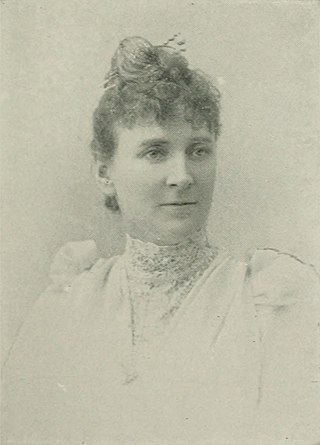
M. Lyle Durgin was a 19th-century American artist from the U.S. state of Massachusetts, who specialized in portraiture and murals. A graduate of New Hampton Institute, New Hampshire, she studied art in Paris where she exhibited in the Salon. After returning to the US, she shared a studio with her sister, Harriet Thayer Durgin, in Copley Square, Boston. Durgin is remembered for designing and executing the murals at the First Congregational Church of Detroit, Michigan.
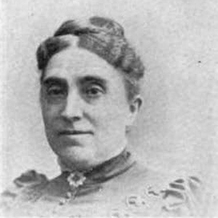
Anna Cheney Edwards was a 19th-century American educator from the U.S. state of Massachusetts. She served as Associate Principal of Mount Holyoke Seminary, 1872–1888; and as Professor of Theism and Christian Evidences, 1888–1890.

Mary R. P. Hatch was an American author from New Hampshire. She contributed stories to the Transcript, Mountaineer, Fireside Companion, Chicago Ledger, Frank Leslie's Illustrated Newspaper, Springfield Republican, Granite Monthly, The Writer, and several magazines including the Portland Transcript, The Saturday Evening Post, Peterson's Magazine, as well as other periodicals. Her novels included The Strange Disappearance of Eugene Comstocks, The Bank Tragedy: A Novel, and The Missing Man, among others.

H. Maria George Colby was an American writer, newspaper editor, and social leader of the long nineteenth century. Her articles appeared in various publications, including the Housewife, Housekeeper, Housekeeper's Weekly, Christian at Work, Demorest's Monthly Magazine, Arthur's Lady's Home Magazine, The Youth's Companion, the Congregationalist, the Portland Transcript, Ladles' World, Good Cheer, The Philadelphia Press, the Chicago Ledger, the Golden Rule, the Household, Good Housekeeping and St. Nicholas Magazine. She served as fashion editor of the Household. Though she used various pen names, including "H. M. G." and "Clinton Montague", her best known literary name was her maiden name, "H. Maria George".

Caroline Brown Buell was an American activist who lectured and wrote on behalf of temperance and suffrage. She served as the assistant recording secretary (1878–80), corresponding secretary (1880–93), and a member of the Our Union publication committee (1876–83) of the National Woman's Christian Temperance Union (WCTU); as well as the president (1904) and corresponding secretary (1875–86) of the Connecticut WCTU. She also originated the plan of the Loyal Temperance Legion, the children's society of the WCTU. Buell wrote extensively for temperance publications, and other papers and magazines. She made her home in East Hampton, Connecticut.
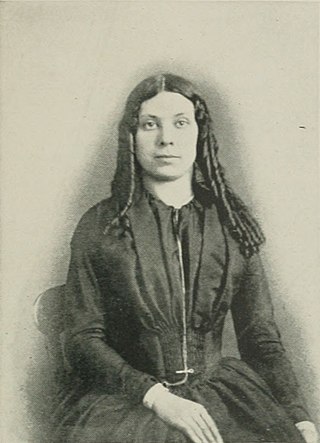
Augusta Harvey Worthen was an American educator and author of the long nineteenth century. She taught school, and wrote poetry and prose. Her greatest work was the history of her town, Sutton, published in two volumes in 1890; it was the first town history in the state of New Hampshire prepared by a woman.
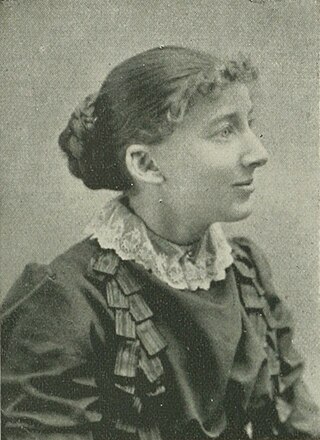
Alice May Douglas was an American author of poetry, children's literature, and non-fiction, as well as a newspaper editor.

Lydia Hoyt Farmer was a 19th-century American author and women's rights activist. For many years, Farmer contributed to the leading newspapers and magazines, on various lines: poems, essays, juvenile stories, historical sketches and novels. She was of a deeply religious nature, and endeavored to tinge all her writings with a moral as well as an amusing sentiment. She edited What America Owes to Women, for the Woman's Department of the World's Columbian Exposition. Her works included: Aunt Belindy's Point of View; The Doom of the Holy City; A Story Book of Science; A Knight of Faith; Short History of the French Revolution; Girls' Book of Famous Queens; What America Owes to Women; and others. Farmer died in 1903.

Maude Gillette Phillips was an American author, educator and animal welfare activist. She was the author of Popular Manual of English Literature. Phillips was a prolific writer for magazines in fiction and criticisms under pen names. Known for her wide social experience, she seemed to be more a woman of the world than a scholar or author.

Nellie George Stearns was an American artist and teacher of art. She taught and held exhibitions in the leading towns and cities of New England.

Louisa Dwight Benton was a 19th-century American linguist, translator, and letter writer. She became physically disabled from rheumatism, unable to walk, and lost almost the entire use of her hands. She learned to read Italian, Spanish, German, Greek, and Russian without any instruction. Then she took up Volapük, and became well known as a Volapük scholar. She carried on correspondence with several linguists in Europe and associations for the spreading of this language. Benton died in 1895.

Mary Elizabeth Perley was an American writer, professor, and poet. She taught at Tilden Ladies' Seminary, New Hampshire Conference Seminary, Tabor College, Fargo College, and the University of North Dakota. In addition to two books, she wrote poems, newspaper articles, short stories, and plays.

Minerva Brace Norton was an American educator and writer. She was from her early youth until her last days a constant contributor to periodical literature. For most of her life, she also filled the role of a pastor's wife.

Mary Thompson Hill Willard was an American teacher and social reformer. Her daughter, Frances Willard, was the founder and president of the World's Woman's Christian Temperance Union (W.C.T.U.) as well as president of the National W.C.T.U.
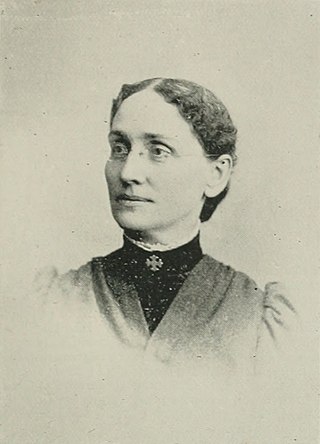
Katherine Van Allen Grinnell was an American lecturer, author, and social reformer. She was one of the first women in the United States to lecture and write on the place of woman in the scheme of government. Grinnell attained an international reputation and was praised by Frances Willard, Susan B. Anthony, Lady Somerset, and others.
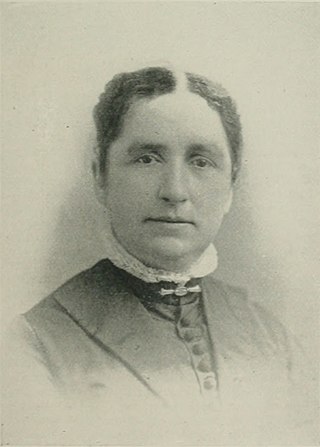
Janette Hill Knox was an American temperance reformer, suffragist, teacher, author and editor. She served as President of the New Hampshire State Woman's Christian Temperance Union (WCTU).
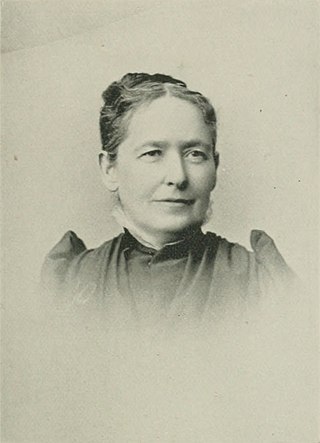
Jane Lord Hersom was an American physician and suffragist.

Lida Rose McCabe was an American writer, journalist, and lecturer. She is remembered as the first woman reporter who traveled to the Klondike. Her first book, Don't You Remember? (1884) was a reminiscence of Columbus, Ohio's early days. In the midst of an active newspaper life in New York City, she found time for the writing of other books, including The American Girl at College (1893) and Ardent Adrienne: The Life of Madame de La Fayette (1930), as well as magazine articles. McCabe contributed to the Popular Science Monthly, Lippincott's Monthly Magazine, McClure's, The Cosmopolitan, St. Nicholas Magazine, Book Buyer, The Outlook, The Bookman, and Town & Country, and syndicated all leading newspaper in the U.S. and abroad. She was also Paris correspondent for the New-York Tribune and the American Press Association (1889–90).

Bessie Behan was an American social leader.
References
- 1 2 3 "Miss M. M. Norton". The Springfield Daily Republican. 25 May 1916. p. 11. Retrieved 10 October 2024– via Newspapers.com.
 This article incorporates text from this source, which is in the public domain .
This article incorporates text from this source, which is in the public domain . - 1 2 3 4 5 6 7 8 Willard, Frances Elizabeth; Livermore, Mary Ashton Rice (1893). "NORTON, Miss Morilla M.". A Woman of the Century: Fourteen Hundred-seventy Biographical Sketches Accompanied by Portraits of Leading American Women in All Walks of Life. Charles Wells Moulton. pp. 541–42. Retrieved 10 October 2024.
 This article incorporates text from this source, which is in the public domain .
This article incorporates text from this source, which is in the public domain . - 1 2 3 4 New Hampshire, ed. (1904). Reports. p. 8. Retrieved 10 October 2024.
 This article incorporates text from this source, which is in the public domain.
This article incorporates text from this source, which is in the public domain. - ↑ "Some New Books". Philippine Education Magazine. 5 (4). Manila: 37. 1908. Retrieved 10 October 2024.
 This article incorporates text from this source, which is in the public domain .
This article incorporates text from this source, which is in the public domain .